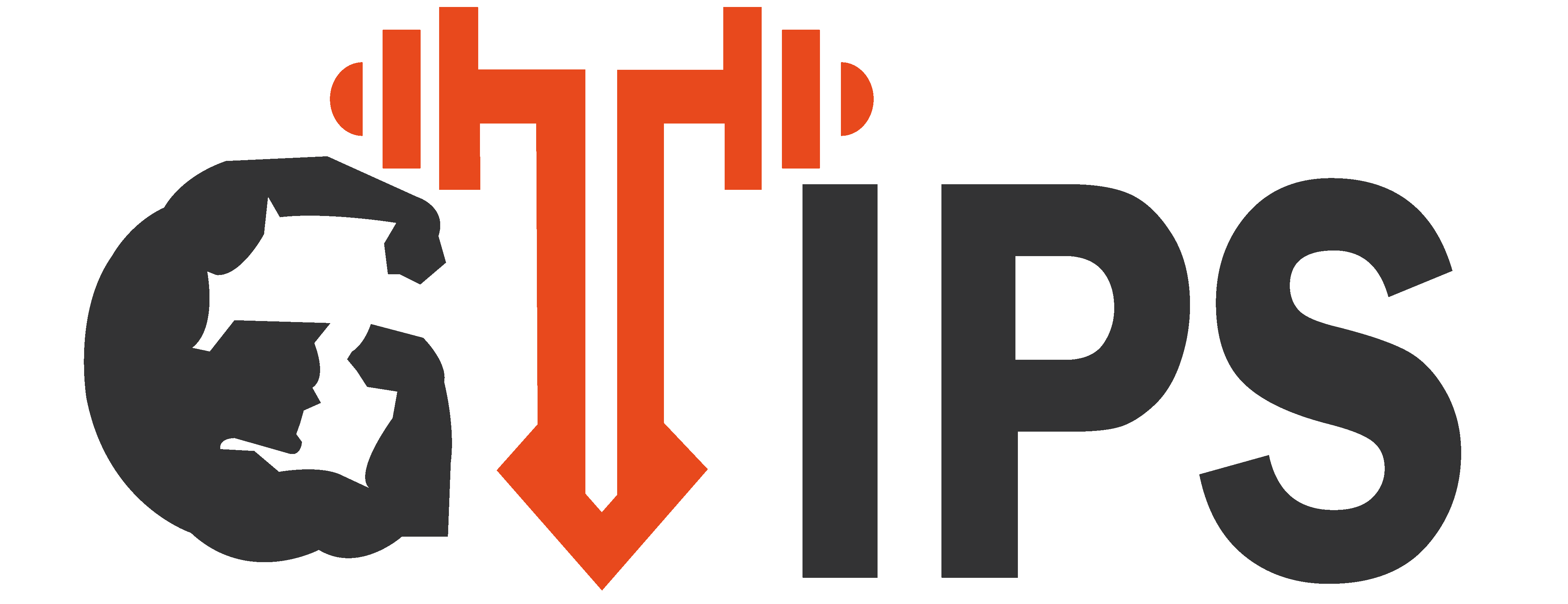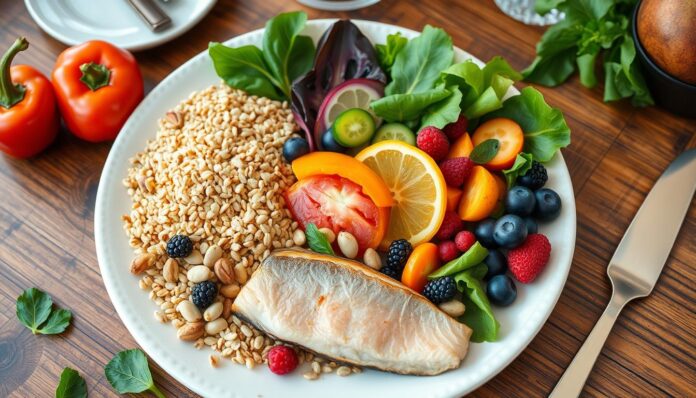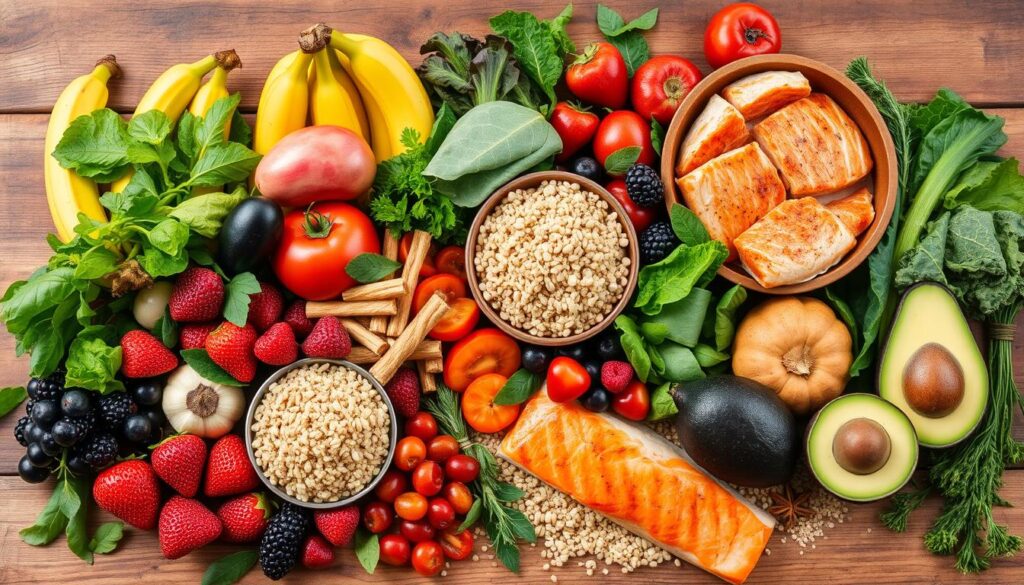I’ve struggled with high blood pressure myself. It’s frustrating and worrisome. Hypertension raises your risk of heart disease and stroke. But, the right diet can help manage your blood pressure and improve your health.
This guide will cover diet plans and nutrition tips to lower your blood pressure. We’ll look at the DASH diet, low-sodium meals, and heart-healthy foods. You’ll learn how to support your health with diet plans for high blood pressure.
Key Takeaways
- Effective diet plans can help manage high blood pressure and reduce the risk of heart disease and stroke.
- The DASH diet is a proven dietary approach for hypertension management, stressing low-sodium, nutrient-rich foods.
- Reducing sodium intake and increasing potassium-rich foods are key for blood pressure control.
- Adding heart-healthy foods like veggies, fruits, whole grains, and lean proteins supports cardiovascular health.
- Changes in lifestyle, like exercise and stress reduction, can boost the benefits of a diet for hypertension.
The DASH Diet: A Dietary Approach to Hypertension Management
The DASH (Dietary Approaches to Stop Hypertension) diet helps prevent and treat high blood pressure. It’s full of vegetables, fruits, and whole grains. It also includes dairy, fish, poultry, beans, nuts, and limits red meat, sweets, and sugary drinks. The DASH diet focuses on foods rich in nutrients like potassium, calcium, and magnesium to lower blood pressure.
What is the DASH Diet?
The DASH diet is a healthy eating plan. It was made by the National Heart, Lung, and Blood Institute (NHLBI). It’s designed to help manage blood pressure through specific foods and nutrients.
DASH Diet Principles
The DASH diet has key principles:
- Focus on fruits, vegetables, and whole grains
- Include fat-free or low-fat dairy products
- Limit red meat, sweets, and sugary drinks
- Eat foods rich in potassium, calcium, and magnesium
- Keep sodium intake under 2,300 milligrams a day
Recommended Servings for the DASH Diet
The DASH diet gives specific serving sizes for each food group. For a 2,000-calorie diet, it suggests:
| Food Group | Servings per Day |
|---|---|
| Whole Grains | 6-8 |
| Vegetables | 4-5 |
| Fruits | 4-5 |
| Fat-free or Low-fat Dairy | 2-3 |
| Lean Protein | 6 or less |
| Nuts, Seeds, and Legumes | 4-5 per week |
| Fats and Oils | 2-3 |
| Added Sugars | 5 or less per week |
By following the DASH diet and its serving sizes, you can manage your blood pressure. This can also lower your risk of heart disease.
Restricting Sodium Intake for Blood Pressure Control
Lowering your sodium intake is key to managing high blood pressure. The American Heart Association suggests no more than 2,300 milligrams of sodium daily. For most adults, aiming for 1,500 milligrams is even better, and more important for those with high blood pressure.
Removing 1,000 milligrams of sodium daily can greatly improve your blood pressure and heart health. Remember, table salt is 40% sodium. So, 1 teaspoon of salt is 2,300 mg of sodium.
Most adults in the U.S. get 70% of their sodium from processed foods. This includes soups, tomato sauce, condiments, and canned goods. To cut down on sodium, always check food labels. Choose low-sodium or no-salt-added options whenever you can.
Also, use salt-free seasonings like herbs, spices, and lemon juice to flavor your food. Avoiding high-sodium restaurant meals can also help control your blood pressure.
| Tips for Reducing Sodium Intake |
|---|
|
By making these simple changes, you can lower your sodium intake. This is a big step towards managing high blood pressure and improving your heart health.
“Modest reduction in salt intake can lead to a significant decrease in blood pressure.”
Low-Sodium Meal Planning and Preparation
Creating tasty, healthy low-sodium meals at home is key to managing high blood pressure. Focus on fresh, whole foods and avoid processed and packaged items. This helps cut down sodium and boosts heart health.
Reading Food Labels for Sodium Content
When planning meals, always check the nutrition labels. Choose foods with less than 200 mg of sodium per serving for snacks, sauces, and meats. For ready-to-eat meals, aim for 600 mg or less per serving.
Salt-Free Seasoning Options
Don’t use salt to flavor your food. Instead, try herbs, spices, citrus, and other tasty ingredients. They can make your meals delicious without extra sodium. Mix garlic, onion, and black pepper, or use fresh herbs like basil and rosemary.
By planning and watching your sodium, you can make tasty, low-sodium meals. These meals support your health and help control high blood pressure. Remember, small diet changes can make a big difference in your health.
“Reducing your sodium intake is one of the most effective ways to manage high blood pressure and improve your cardiovascular health.”
diet plans for high blood pressure
There are many diet plans for high blood pressure, or hypertension diet options. The Mediterranean diet focuses on plant-based foods, lean proteins, and healthy fats. The Flexitarian diet is mostly vegetarian but allows for some meat, poultry, or fish.
Talking to a healthcare professional or registered dietitian can help find the best dietary approaches for hypertension for you. These diets can help manage your high blood pressure and lower health risks.
Key Dietary Principles for Blood Pressure Management
- Focus on fruits, vegetables, whole grains, and lean proteins
- Limit processed foods, red meat, and high-sodium items
- Emphasize heart-healthy fats like those found in nuts, seeds, and fish
- Moderate your intake of sweets, sugary beverages, and sodium
Eating a balanced and nutrient-rich diet can help manage your high blood pressure. It also supports your heart health.
“Adopting a healthy diet is one of the most effective ways to manage high blood pressure and reduce the risk of related health issues.”
Finding a diet plan for high blood pressure that you can stick to is key. Work with your healthcare team to create a nutrition plan that fits your needs. This will help you reach your blood pressure management goals.
Incorporating Heart-Healthy Foods
It’s key to eat heart-healthy foods to manage high blood pressure. Eating foods rich in nutrients like vegetables, fruits, whole grains, and lean proteins helps your heart. These foods control blood pressure and give your body important vitamins and minerals.
Nutrient-Rich Vegetables and Fruits
Vegetables and fruits are full of potassium, fiber, and antioxidants. They help lower blood pressure. Try to eat a mix of leafy greens, citrus fruits, berries, and root vegetables every day. A study in The Lancet in 2017 showed eating more fruits, vegetables, and legumes can lower heart disease risk.
Whole Grains and Lean Proteins
Whole grains like brown rice, whole wheat bread, and oats are good for your heart. They have complex carbs, fiber, and nutrients. Eating lean proteins like poultry, fish, and legumes with these grains is also beneficial. A study found eating 30 grams more whole grains daily can lower blood pressure risk by 8%.
| Heart-Healthy Food | Potential Benefits for Blood Pressure |
|---|---|
| Blueberries and Cranberries | Reduce systolic blood pressure by over 3 mm Hg |
| Olive Oil | Lower blood pressure due to its nutrients and plant-based compounds |
| Carrots | Decrease the likelihood of high blood pressure by 10% per 100 grams consumed daily |
| Eggs | Associate with a 2.5 mm Hg lower systolic blood pressure and a reduced risk of high blood pressure |
Eating these heart-healthy foods is a big step toward better blood pressure and heart health.
Lifestyle Modifications for Hypertension Management
Alongside dietary changes, lifestyle modifications are key in managing high blood pressure, or hypertension. Two main parts of this are regular exercise and stress reduction techniques.
Regular Exercise
Doing regular physical activity, like brisk walking, swimming, or cycling, can lower blood pressure. It also improves heart health. Studies show that regular exercise can drop high blood pressure by up to 9 mmHg for the top number and 5 mmHg for the bottom number.
Stress Reduction Techniques
Stress can raise blood pressure by causing blood vessels to narrow and heart rate to increase. Using stress reduction techniques, like meditation, deep breathing, and mindfulness, can help. These methods lower stress hormones and promote calm.
By making these lifestyle modifications for hypertension, people can help manage their high blood pressure. This reduces the risk of heart problems.
“Making lifestyle changes, such as regular exercise and stress management, can be just as important as medication in controlling high blood pressure.”
Addressing Weight Management for Blood Pressure Control
Keeping a healthy weight is key to managing high blood pressure. Excess weight, mainly around the midsection, can raise blood pressure. The Centers for Disease Control and Prevention (CDC) says about 46 percent of U.S. adults have high blood pressure. This risk grows with age, hitting up to 82 percent of those 75 and older.
To manage weight for blood pressure, eat a balanced diet and stay active. This can help you reach and keep a healthy weight. A healthcare provider or dietitian can help create a plan just for you.
Even a small weight loss can lower blood pressure a lot. Studies show losing 2.2 pounds can drop systolic blood pressure by 1 mmHg on average. Also, 150 to 300 minutes of moderate exercise or 75 to 150 minutes of vigorous exercise a week is recommended.
Eating a balanced diet, like the DASH or Mediterranean diet, and exercising regularly can help. These diets focus on fruits, veggies, whole grains, lean proteins, and healthy fats. They also cut down on sodium and processed foods.
“Losing weight is one of the most effective lifestyle changes for lowering blood pressure, as it can reduce hypertension by up to 11 mmHg.”
By changing your diet and staying active, you can control your blood pressure. This can also lower your risk of heart problems linked to high blood pressure.
Conclusion
Effective diet plans, like the DASH diet, are key in managing high blood pressure. They help lower the risk of health problems. By eating nutrient-rich foods and cutting down on sodium, you can improve your health.
The DASH diet limits sodium and fats, and boosts fruits, veggies, whole grains, and low-fat dairy. It’s backed by science to lower blood pressure. It also focuses on nutrients like potassium, calcium, and magnesium for heart health.
To keep your blood pressure healthy, don’t forget about exercise, managing stress, and keeping a healthy weight. A mix of good diet and lifestyle changes can help control high blood pressure. This reduces the risk of serious heart problems.
FAQ
What is the DASH diet and how can it help manage high blood pressure?
The DASH diet is a plan to stop hypertension. It’s full of veggies, fruits, and whole grains. It also includes lean proteins and dairy, but limits red meat and sweets.
This diet is rich in nutrients like potassium and magnesium. These help lower blood pressure.
How important is reducing sodium intake for managing high blood pressure?
Cutting down on sodium is key for managing blood pressure. The DASH diet limits sodium to 2,300 milligrams a day. For severe cases, it’s 1,500 milligrams.
To reduce sodium, read labels, choose low-sodium foods, and use herbs for flavor. Avoid processed and restaurant foods.
What are some tips for preparing low-sodium meals at home?
Cooking low-sodium meals at home is effective. Read labels and pick low-sodium options. Use herbs and spices for flavor instead of salt.
Focus on fresh ingredients and avoid processed foods. This will help you cut down on sodium.
What other diet plans can be effective for managing high blood pressure?
Other diets like the Mediterranean and Flexitarian diets can also help. The Mediterranean diet focuses on plant-based foods and healthy fats. The Flexitarian diet is mostly vegetarian with occasional meat.
Talking to a healthcare professional or dietitian can help find the best diet for you.
What heart-healthy foods should be incorporated into a diet for high blood pressure?
Eating heart-healthy foods is vital for managing blood pressure. Vegetables and fruits are rich in nutrients that help lower blood pressure. Whole grains provide fiber and nutrients.
Lean proteins like poultry and fish are also good. They are low in fat and cholesterol.
How can lifestyle modifications help manage high blood pressure?
Lifestyle changes are important for managing blood pressure. Regular exercise, like walking or swimming, can help. Stress-reducing activities like meditation can also help.
These changes can lower blood pressure and improve heart health.
Why is maintaining a healthy body weight important for managing high blood pressure?
A healthy weight is key for managing blood pressure. Excess weight, around the midsection, can raise blood pressure. A balanced diet and exercise can help achieve a healthy weight.
Consulting with a healthcare provider or dietitian can help create a weight management plan.





